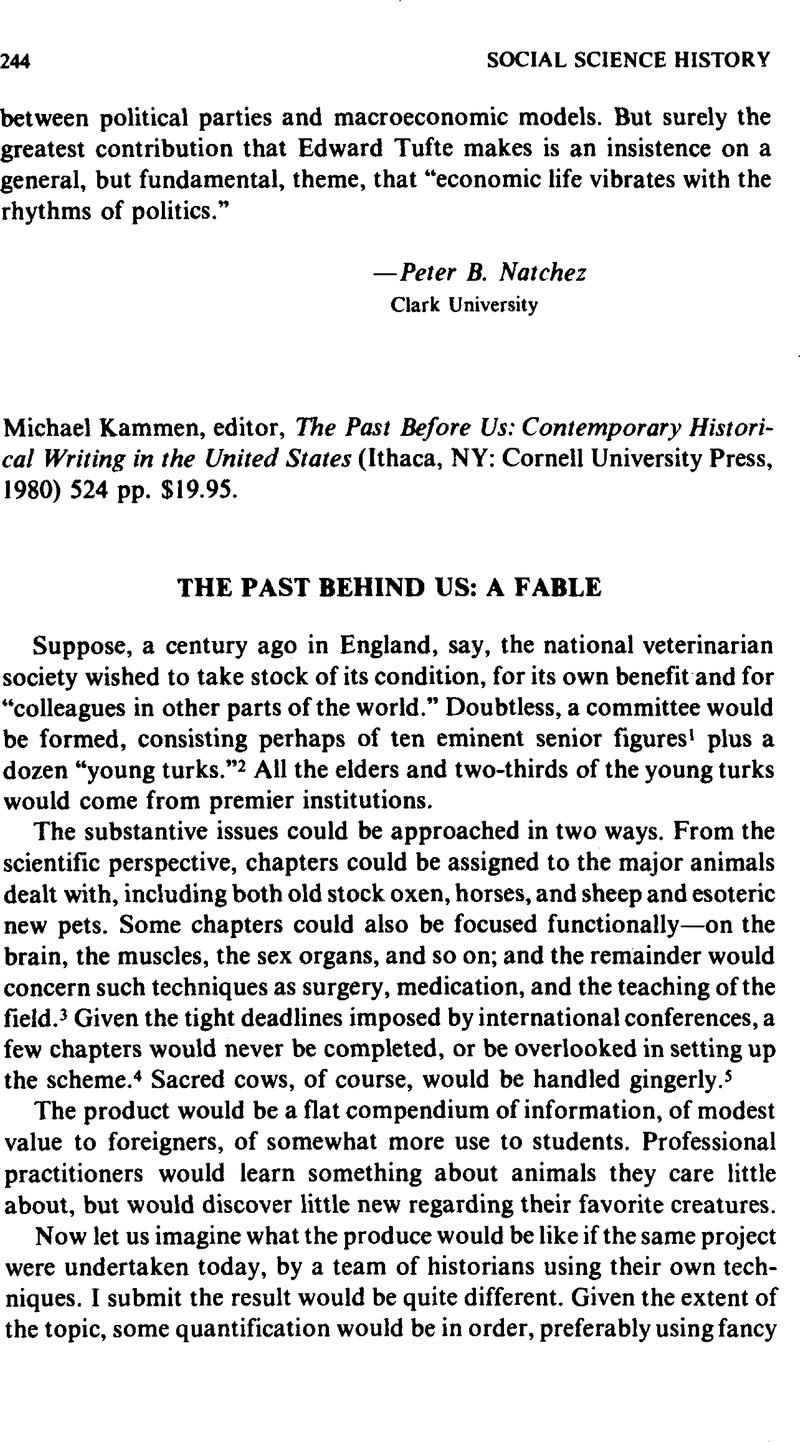No CrossRef data available.
Article contents
The Past behind Us: A Fable - Michael Kammen, editor, The Past Before Us: Contemporary Historical Writing in the United States (Ithaca, NY: Cornell University Press, 1980) 524 pp. $19.95.
Published online by Cambridge University Press: 04 January 2016
Abstract

- Type
- Book Reviews
- Information
- Copyright
- Copyright © Social Science History Association 1981
References
Notes
1. Mean age 62, standard deviation 4.7 Based, as are all the footnotes, on The Past Before Us: Contemporary Historical Writing in the United States.
2. Mean age 44, standard deviation 4.5.
3. Seven chapters deal with geographical-chronological themes, such as Medieval, Modern Europe, and African History; eight deal with topics such as social, political, and labor history; five with methods.
4. There are no chapters on ancient, economic, or educational history, on Marxism, or on archives or historical societies.
5. J. Saunders Redding, best known for popular history, authored the weak chapter on “The Negro in American History.”
6. William McNeill had his class identify and classify the country and subject matter of 2044 books published between 1968 and 1978. Robert Darnton, all alone, classified thousands of courses offered at eight universities from 1948 to 1979, scanned the abstracts of a thousand dissertations, and tabulated the subfield of over a thousand articles in three leading journals. J. Morgan Kousser, also solo, counted 1200 tables in 35,000 pages of five leading journals, discovering that 11% were more sophisticated than mere crosstabulations. There are no sophisticated tables in this book though Kousser tested for trends over time, finding a growth rate of three tables per 1000 pages per year (for 1961-1978). The editor failed to coordinate the data gathering, and the contributors seem unaware of their overlapping efforts. There is no uniformity in coverage or categorization. Only Darnton used sampling (of years), but his list of schools includes only elite institutions. No one tried to penetrate to less prestigious colleges or journals.
7. Philip Curtin looked at doctoral production in African history, discovering the median age of specialists was 38 in 1980, with a small variance, and a falling birth rate. Africanists, he concludes, are basically a cohort bred in the decade 1965 to 1975, and destined to march forth alone through time.
8. Hazel Whitman Hertzberg, of Teacher’s College, has a thoughtful essay on the crisis of “The Teaching of History,” chiefly focused, however, on secondary schools.
9. And funded the book.
10. They demanded a separate essay on women’s history—and got it, a pamphlet published separately and for limited circulation.
11. Peter Stearns, at 44 a modal young turk, points up this threat (on p. 206) in a brilliant essay on social history. Robert Darnton’s excellent essay on intellectual and cultural history also discusses the matter (p. 334).




